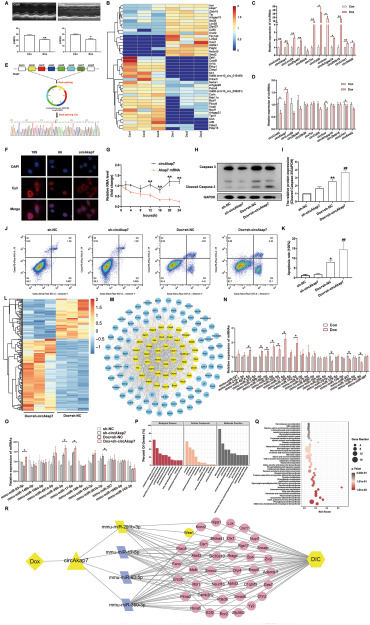
CircAkap7: A novel circular RNA with a role in Doxorubicin-induced cardiotoxicity


Doxorubicin (Dox), an anthracycline chemotherapy drug, is used extensively in cancer chemotherapy and has been studied in depth in relation to cancers including leukemia, small-cell lung cancer, and ovarian cancer.1 However, the dose-dependent cardiotoxicity of Dox seriously limits its clinical application.2 As a type of noncoding RNA with a covalent cyclic structure, circular RNA (circRNA) has emerged as a new and exciting topic. Growing evidence has shown that circRNA is linked to the pathogenesis of various cardiovascular diseases, including Doxorubicin-induced cardiotoxicity (DIC).3 The function of circRNA is closely associated with its cellular sublocalization. CircRNAs distributed in the cytoplasm primarily serve as microRNA (miRNA) sponges that competitively adsorb miRNA and reduce the binding and degradation of the target mRNA by miRNA, leading to indirect up-regulation of the target gene and increased execution of its function.4 In the present research, a novel circRNA named mmu_circ_0000153 with a length of 840 bp was identified in DIC through circRNA sequencing. It is derived from the precursor Akap7 mRNA through the back-splicing of exons and is therefore also referred to as circAkap7. Functionally, circAkap7 serves as an endogenous protective factor for the heart, as it was activated and increased in abundance to resist Dox-stimulated cardiomyocyte damage, whereas its knockdown intensified Dox-induced cardiomyocyte apoptosis. To examine the mechanism, the circAkap7‒miRNA‒mRNA (messenger RNA) ceRNA (competing endogenous RNA) network was constructed through miRNA prediction and mRNA sequencing based on circAkap7 knockdown.
